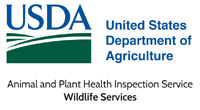U.S. Department of Agriculture: Animal and Plant Health Inspection Service
ORCID IDs
Brian S. Dorr https://orcid.org/0000-0001-6857-8560
Scott A. Rush https://orcid.org/0000-0001-5920-7768
Document Type
Article
Date of this Version
2023
Citation
Moran, L.L.K.; Dorr, B.S.; Hanson-Dorr, K.C.; Moore, R.J.; Rush, S.A. Space Use and Movements of Southeastern Breeding Double-Crested Cormorants (Nannopterum auritum) in the United States. Diversity 2023, 15, 453. https://doi.org/10.3390/d15030453
Abstract
Abstract: Seasonal movements of Double-crested Cormorants (Nannopterum auritum) have been studied at breeding and wintering sites in the southeastern United States, but little information exists on the movements of these birds within and from their southern breeding sites in lacustrine systems. Since 2001, cormorants have established nesting colonies on islands in Guntersville Reservoir in Alabama, USA. Following the movements of tagged cormorants using satellite telemetry, we found that the mean home range during the 2017 breeding season (May–August) was 41.76 km2, with a core use area of 6.36 km2. The mean home range used by these birds was largest during the period coinciding with incubation: 9–30 May: (98.86 ± 80.64 km2) compared with the chick-rearing 31 May–4 July: 18.30 ± 22.56 km2), and the post-fledge periods (5 July–15 August: 42.04 ± 30.95 km2). There was no significant difference in the metrics of movement and space use between male and female cormorants assessed in this study. Differences in space used by cormorants breeding in Alabama relative to their northern breeding grounds may be explained by landscape characteristics and availability of prey.
Included in
Natural Resources and Conservation Commons, Natural Resources Management and Policy Commons, Other Environmental Sciences Commons, Other Veterinary Medicine Commons, Population Biology Commons, Terrestrial and Aquatic Ecology Commons, Veterinary Infectious Diseases Commons, Veterinary Microbiology and Immunobiology Commons, Veterinary Preventive Medicine, Epidemiology, and Public Health Commons, Zoology Commons


Comments
Creative Commons Attribution (CC BY) license